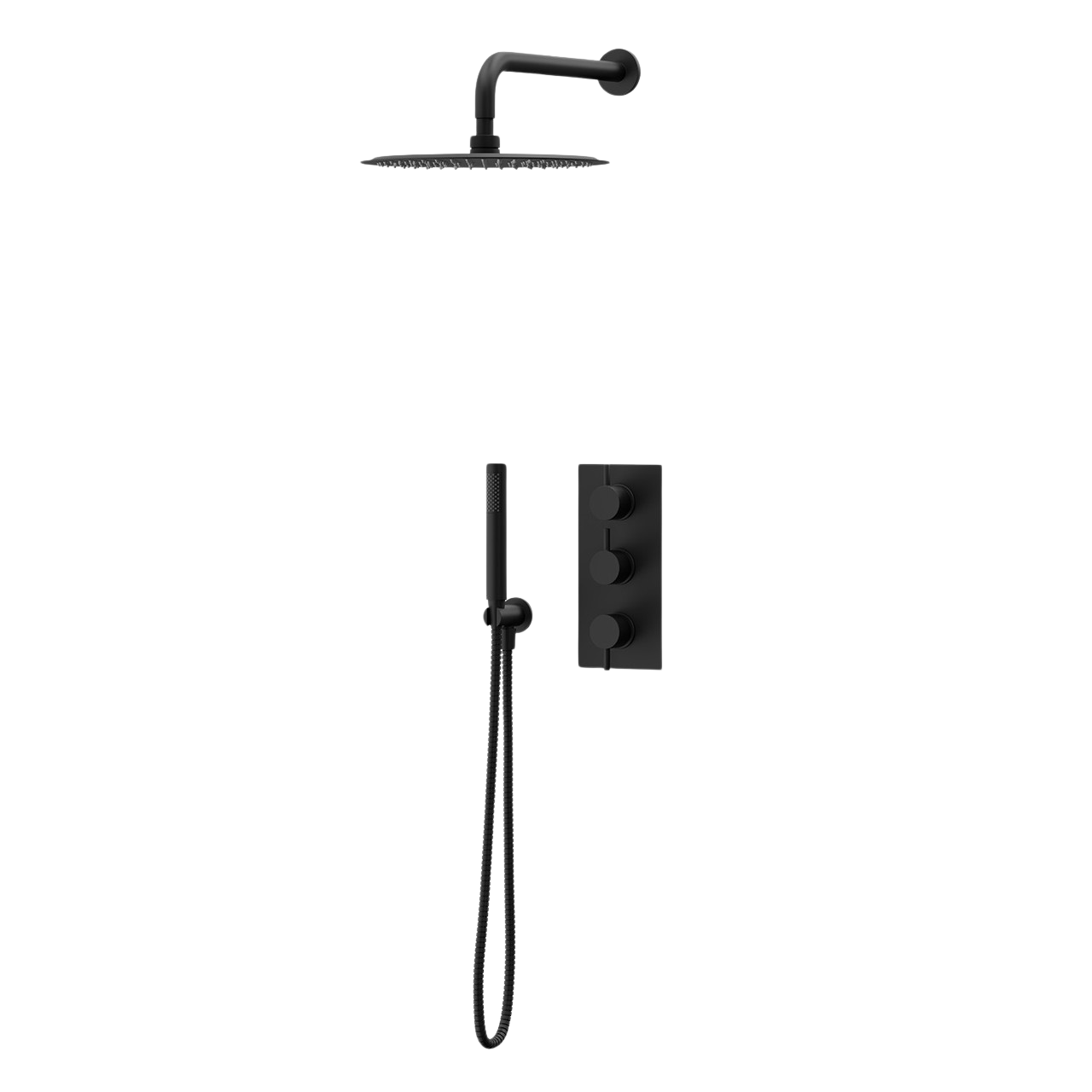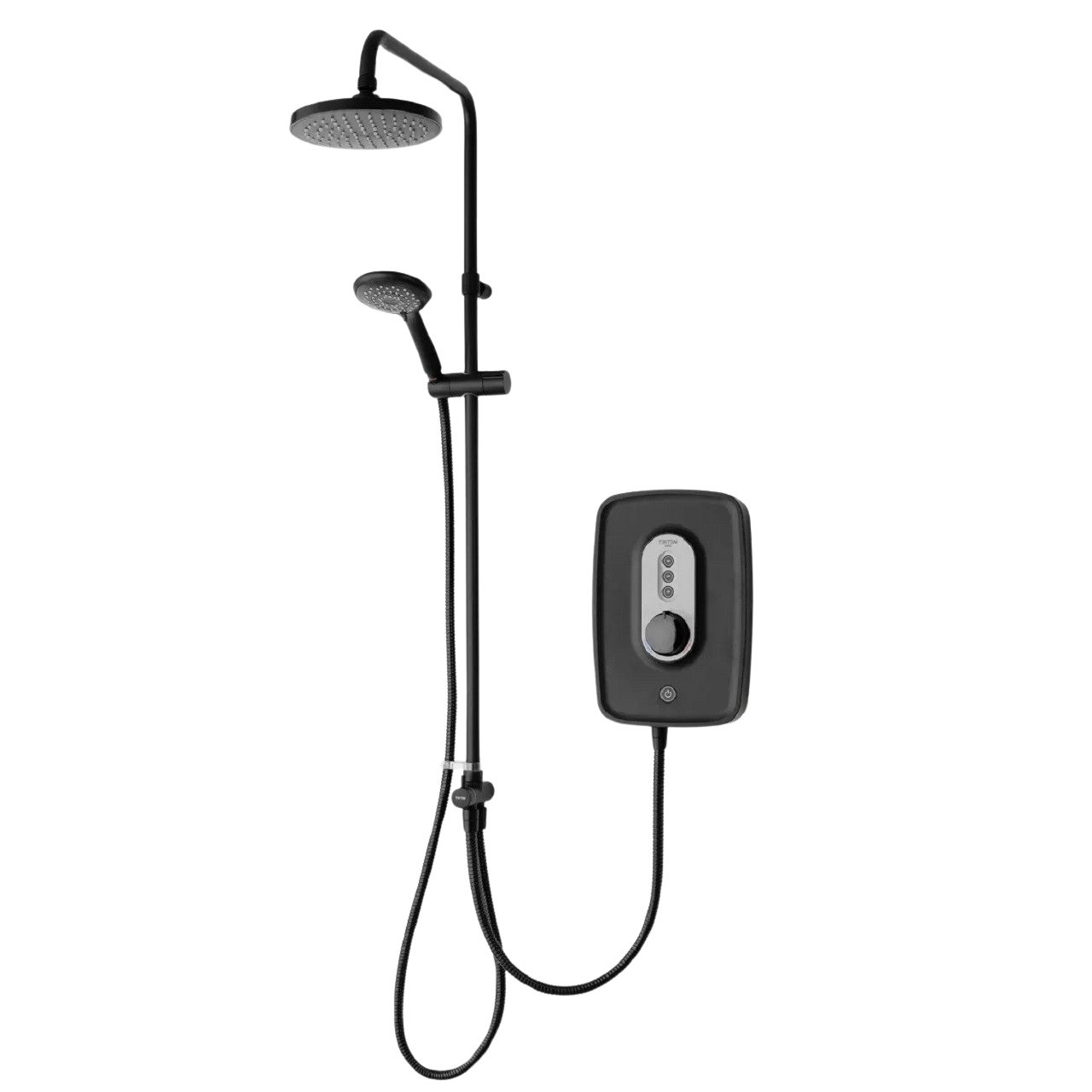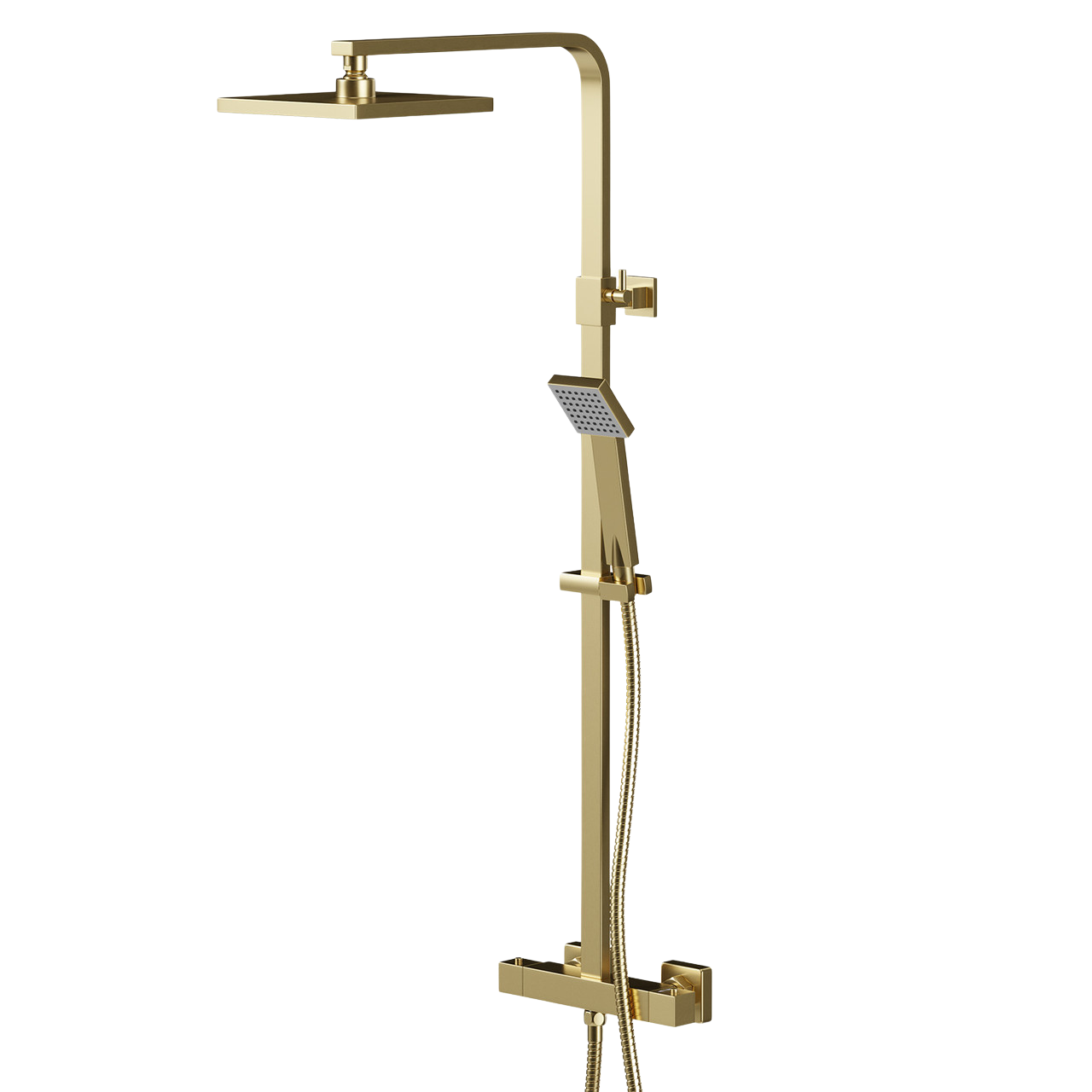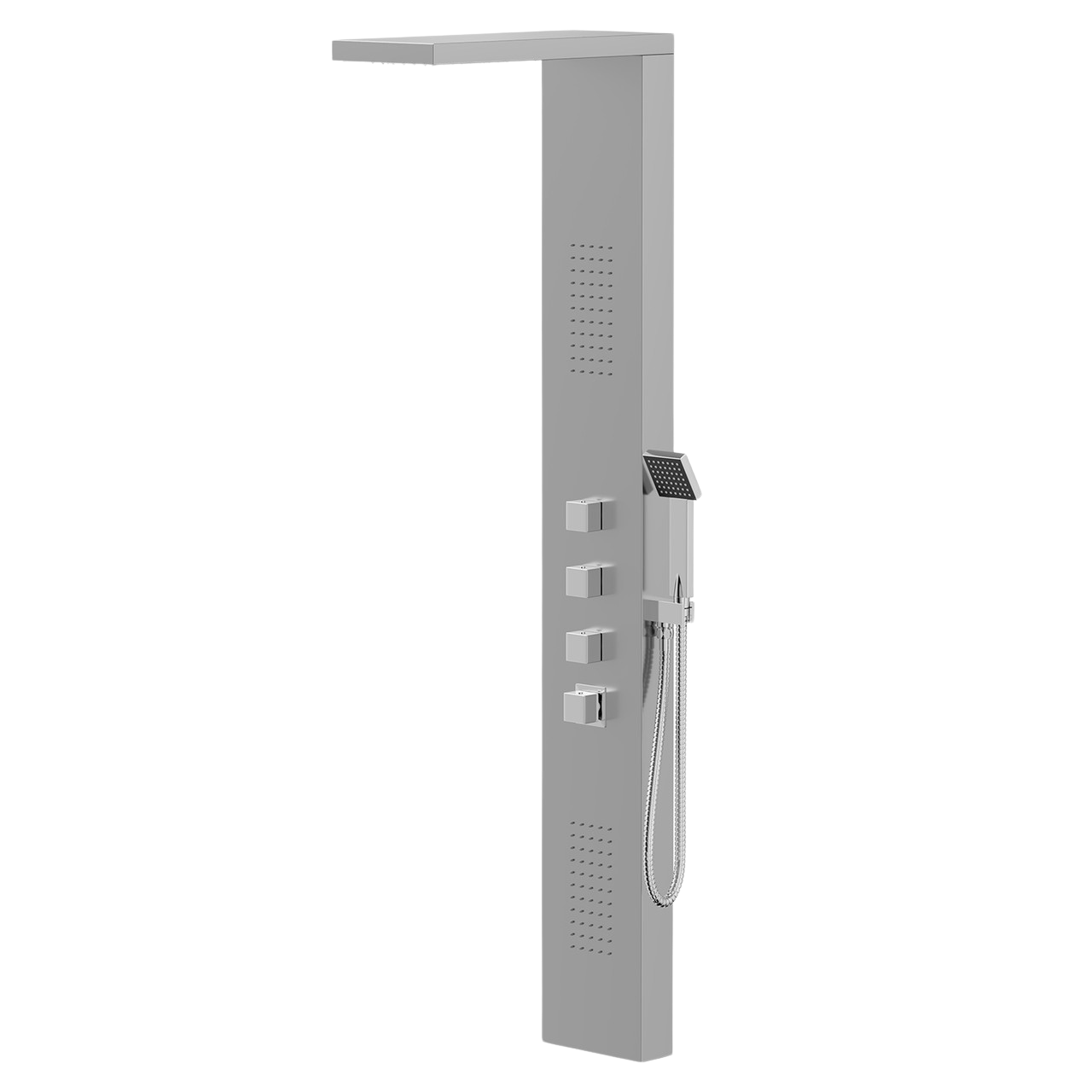Shower Buying Guide: How to Choose the Perfect Design for Your Space
30th Jul 2024
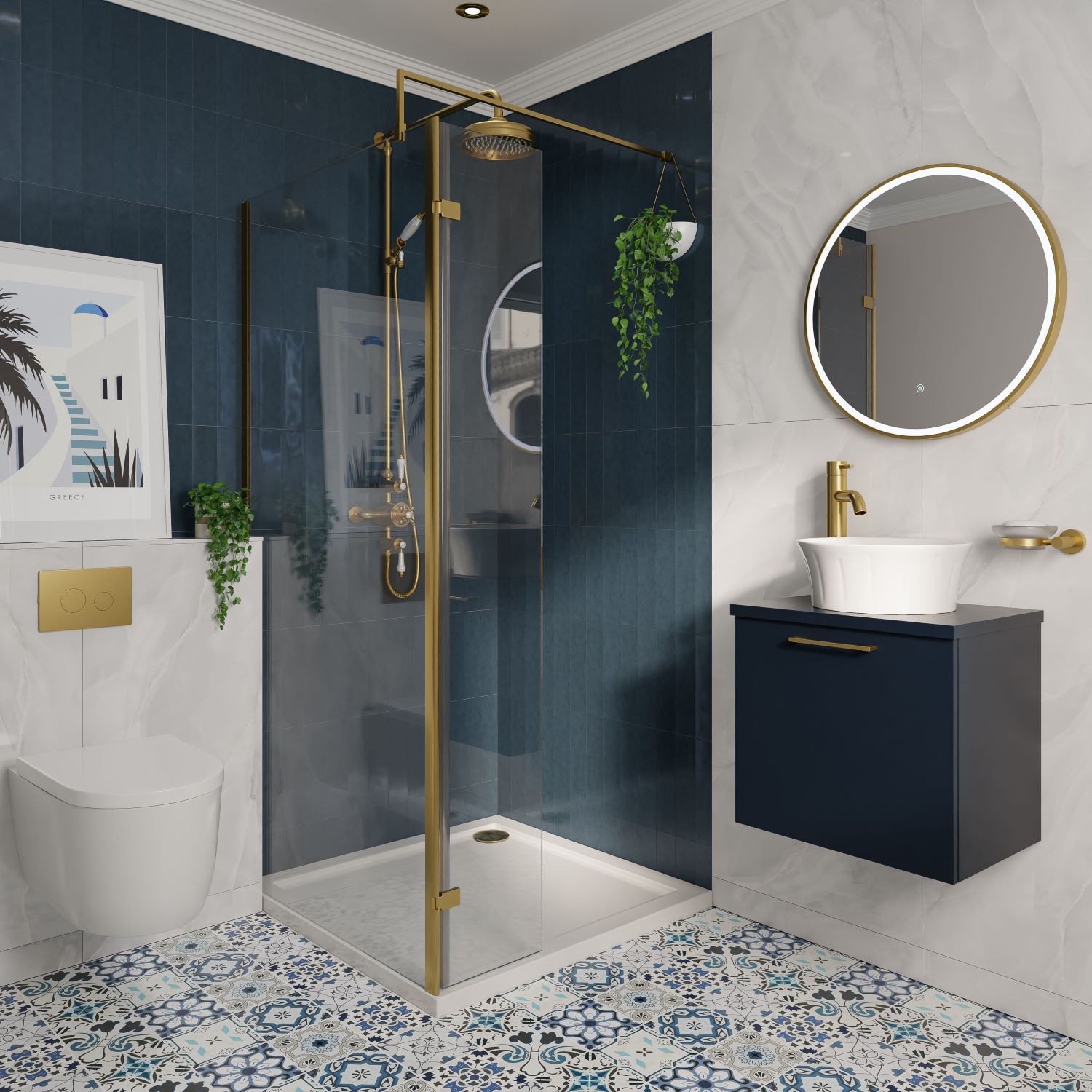
Your shower is an important part of your bathroom. Plus, our recent report found that over 65% of people prefer showers compared to just 35% who favour baths, and a staggering 71% typically shower every day – meaning that choosing the right shower for you is well worth the effort.
So, whether you’re building a new bathroom from the ground up or replacing an old shower unit, our shower buying guide will walk you through everything there is to know about showers on the market today.
We’ve also asked Brian Toward, Chief Executive Officer (CEO) here at Wholesale Domestic, to bring you even more expert insight into choosing the perfect shower for your bathroom’s needs.
Read on to learn more about the different types of showers and how to select one that fits within your budget.
Contents
- The different types of shower
- What to consider when buying a shower
- How to choose a shower head
- How to choose shower valves
- Frequently asked questions
- The best showers for every home
The different types of shower
At Wholesale Domestic, we recognise that each household has unique needs when finding a suitable shower. We offer a wide range of options to suit different space constraints, bathroom styles, and budget limitations.
However, with so many different styles and features available, knowing how to choose a shower can be overwhelming. That’s why we’ve broken down each type to make things simple.
Thermostatic mixer showers
A thermostatic mixer shower is a type of mixer shower that uses a boiler and runs from a hot and cold water supply. Using a thermostatic valve, the two water supplies are mixed to provide the perfect temperature. They require a minimum of 0.5 bar water pressure and need access to both a hot and cold water supply.
Older properties with a gravity-fed water system will likely have low water pressure. As a result, you’ll need to install a twin or single impeller negative or universal pump, which helps to boost the water pressure.
Thermostatic showers are a great choice for family homes or the elderly due to their reliable temperature control, which prioritises safety. The valve in these showers regulates the water flow to prevent scalding or freezing water when the taps are used elsewhere in the house or when someone flushes the toilet.
At the heart of any thermostatic mixer shower is the valve, which can be categorised by two main mounting types – concealed or exposed.
- Concealed shower valve – With a concealed valve, the pipework and plumbing are hidden, creating a seamless, luxurious finish. However, you need about 100 mm of space inside the wall to fit the valve. If you don't have enough space, you'll need to build out the wall to accommodate the valve or choose a different shower system.
- Exposed shower valve – An exposed valve, on the other hand, usually features a visible bar mounted to the wall.
Thermostatic mixer showers can be configured with a combination of fixtures such as fixed heads, handsets, slide rails, body jets, or bath spouts. The number of outlets determines how many of these fixtures can be integrated into the shower setup.
If you have a decent water pressure, or a plumber who can install a single or twin impeller pump to boost it, these showers can be a simple yet effective way to bring a sleek design to your bathroom with superior functionality.
Electric showers
Electric showers are known for their minimalist design and affordability. They contain their own heating unit, so don’t need to be connected to a hot water supply. They heat the water to the right temperature and keep it there – ensuring you won’t be scalded or shocked with a surprise cold shower.
Electric showers vary in strength and efficiency, depending on their kilowatts (kW) rating. This number often ranges from 8.5 kW to 10.5 kW and refers to the number of kilowatts your shower requires to run – with higher numbers resulting in a more powerful shower overall.
To power your electric shower, you’ll need to purchase an appropriate cable and fuse to connect the shower to the consumer electricity supply. This is because you can’t wire an electric shower directly into your existing electrical circuit.
The fuse size should be equal to or nearest to the kilowatt rating of the shower. We recommend the following, depending on the kW rating of your particular shower unit:
- 7 kW – 30amp fuse
- 7.5 kW – 32amp fuse
- 8 kW – 40amp fuse
- 8.5 kW – 40amp fuse
- 9.5 kW – 40/45amp fuse
- 10.5 kW – 45/50amp fuse
The cable size that you’ll need for your electric shower depends on the kW rating, installation method, the length of the circuit, and any de-rating factors – such as high heat levels, which could pose a threat to nearby pipework. In many cases, a 6mm cable will work for showers with a kW rating up to 8 kW. For showers above this rating, you may need to install a 10mm cable instead. In order to determine the cable size needed, a competent electrician will need to assess the proposed circuit.
Unlike other shower types, electric showers must always be installed by a fully certified electrician and plumber. The electronic components pose a potential fire risk if not installed correctly.
Rigid riser showers
A rigid riser shower system features a fixed, vertical pipe extending from the shower valve up to the shower head. This riser is typically made of metal and isn't flexible, hence the term 'rigid.'
The shower head mounted on a rigid riser usually remains in a fixed position, although some models might allow for minor adjustments in angle or height.
Depending on the model, some units require a minimum of 0.5 bar water pressure and hot and cold water supply access. For many, the recommended water pressure is 3 bar, with a maximum pressure of 5. Just ensure that you check the specifications for your preferred unit carefully before purchasing.
They usually come equipped with a rainfall shower head and a separate handset on a sliding rail. This makes them a great choice for busy households – the handset can be used for a quick body-only shower, hair-wash days, or even to clean the shower enclosure after use.
These showers are suitable for any bathroom and are available in various colours, from classic chrome to brushed brass, matt black, nickel and gunmetal.
Shower panels
Shower panels – also known as shower towers – are a unique style of shower that conceals all of the pipework behind a sleek middle column. They’re the perfect choice to add to any bathroom for a contemporary feel.
Most of our shower panel systems at Wholesale Domestic include body jets, an overhead rain-effect shower, and an independent shower handset, helping you achieve the ultimate showering experience.
Similar to traditional thermostatic showers, shower towers mix hot and cold water supplies, requiring a connection to the boiler to allow you to control the temperature. They usually need a minimum of 1 bar water pressure and a maximum of 5. However, this can vary between models.
These showers are controlled via a thermostat and are guaranteed to provide a safe and comfortable water temperature.
Shower panels are best suited to medium to large-sized shower enclosures. Although their size is not significantly larger than a rigid-riser shower, which can be used for both shower enclosures and over-bath installation, these shower types are most suitable for use with an enclosure. This is because enclosures provide a contained space that helps manage water splash, which is essential when using features like body jets.
What to consider when buying a shower
When it comes to buying a new shower, there are certain factors you should consider to help you decide which style is most suitable for your home.
What is your water pressure like?
Water pressure plays an important role when purchasing a shower. If your shower type requires high pressure, but you live in a low-pressure area, you could be disappointed when you hop into your shiny new shower to find the water trickling out of the shower head.
“You should first test your water pressure before committing to a specific style of shower,” Brian explains. “There are several ways to do this, including consulting an expert to test your water pressure for you or by testing the pressure yourself.”
Brian explains how you can test your water pressure at home following this simple method:
- “Place a one to two-litre water jug under a tap in your bathroom and get a stopwatch.
- Turn the tap on, and time six seconds on your stopwatch before turning off the tap.
- A quick sum of the amount of water in the jug in litres multiplied by 10 will give you the flow rate in litres per minute. For example, if your jug has 0.5 litres of tap water, multiply this by 10, which will give you 5 litres per minute as your flow rate.”
“If you have a flow rate lower than 10 litres per minute, this is likely to be considered low water pressure. Anything between 10 to 15 litres per minute is acceptable, and a flow above 15 litres per minute is good,” says Brian.
Each shower type has a minimum and maximum water pressure, with most showers operating with a minimum of 0.1 bar water pressure (0.1 litres per minute). However, certain showers, such as thermostatic showers and shower panels, operate best in high-pressure water areas with at least 0.5 bar pressure (0.5 litres per minute). This is why it’s important to know your water pressure beforehand.
“Even if your home has low water pressure, this doesn’t mean you can’t still choose your favourite shower type,” explains Brian. “However, it may mean installing a shower pump. These work by increasing the volume of water pumped through the pipes, creating a temporary higher water pressure when the shower is used.”
Which water system does your house have?
In the UK, there are three types of water systems commonly used in homes. The type of water system your house has will influence how powerful your shower system could be.
- Gravity-fed system – This water system uses a cold water tank, often located in the attic, alongside a water cylinder kept in the airing cupboard. This system usually means low water pressure, which can be improved using a shower pump to enhance the pressure for a stronger water flow.
- Combi boiler system – Combi boiler systems feature a boiler without tanks or water cylinders. Instead, the boiler instantly heats water when required. This capability often results in good water pressure, making combi boilers well-suited for mixer showers that provide immediate hot water as needed.
- Unvented system – An unvented system features a water cylinder heated by a high-pressure immersion heater or boiler. This supplies large volumes of hot water, and the high water pressure works well with all shower types.
Key features
Along with the type of shower you choose to buy, there are a variety of additional components that can add new features to your shower for the ultimate relaxation experience. Some of the most common include:
- Handsets – A handset is an additional shower head attached to the main shower via a hose. They allow you to target specific areas when washing your hair, body, or even the shower itself! They’re available in a wide variety of styles, from thin, tubular designs to classic rounded shower heads and more.
- Body jets – Body jets are additional shower heads mounted to the wall that direct therapeutic jets of water at your body during your shower, offering a spa-like treatment at home. Body jets are a luxury upgrade for your bathroom that can help relieve stress.
However, it's important to note that body jets are usually incompatible with rigid riser showers. These showers are designed with a fixed vertical pipe that limits flexibility in adding additional outlets.
They also don't work well with electric showers, as body jets demand more water flow than the heating element can handle, leading to inconsistent water temperatures and pressure.
- Hoses – These are used to connect the main shower head or an additional handset to the wall-mounted shower unit. Shower hoses are flexible metal tubes that can add style and colour to your shower.
How to choose a shower head
The shower head is one of the most critical components of your shower. Different shower heads create a very different experience.
There are three main types of shower heads available: fixed, riser kits, and combination.
For most types of showers you can choose from any of these heads. However, rigid riser showers and shower panels typically come with a fixed head and don’t support other options.
Fixed shower heads
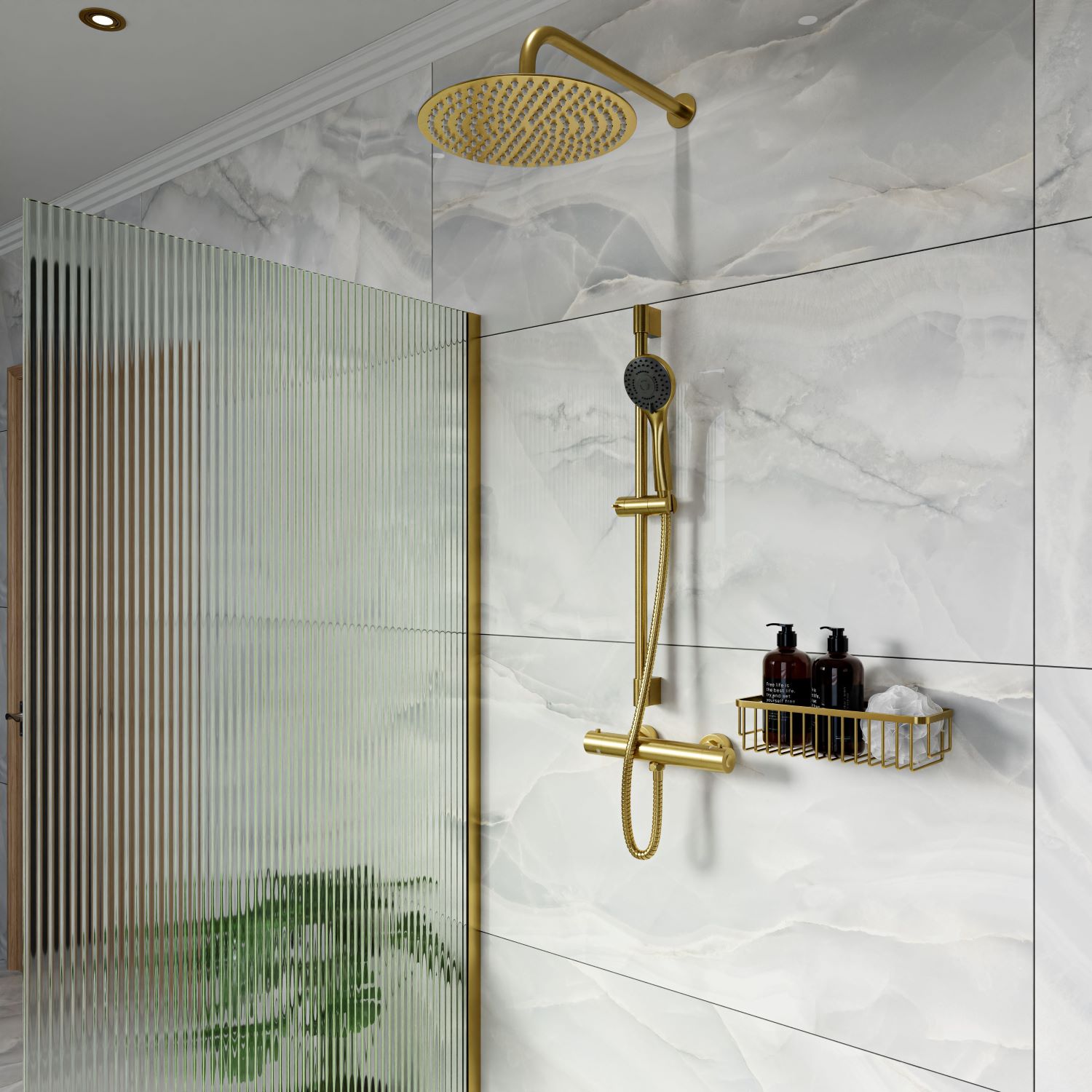
“Fixed shower heads are mounted directly onto the wall. These shower heads are often rainfall styles, creating a cascading effect that is perfect for unwinding after a long day,” Brian says. “However, since the head cannot be removed from the wall or adjusted, this does make them quite unsuitable for families with a wide range of heights.”
Riser shower heads
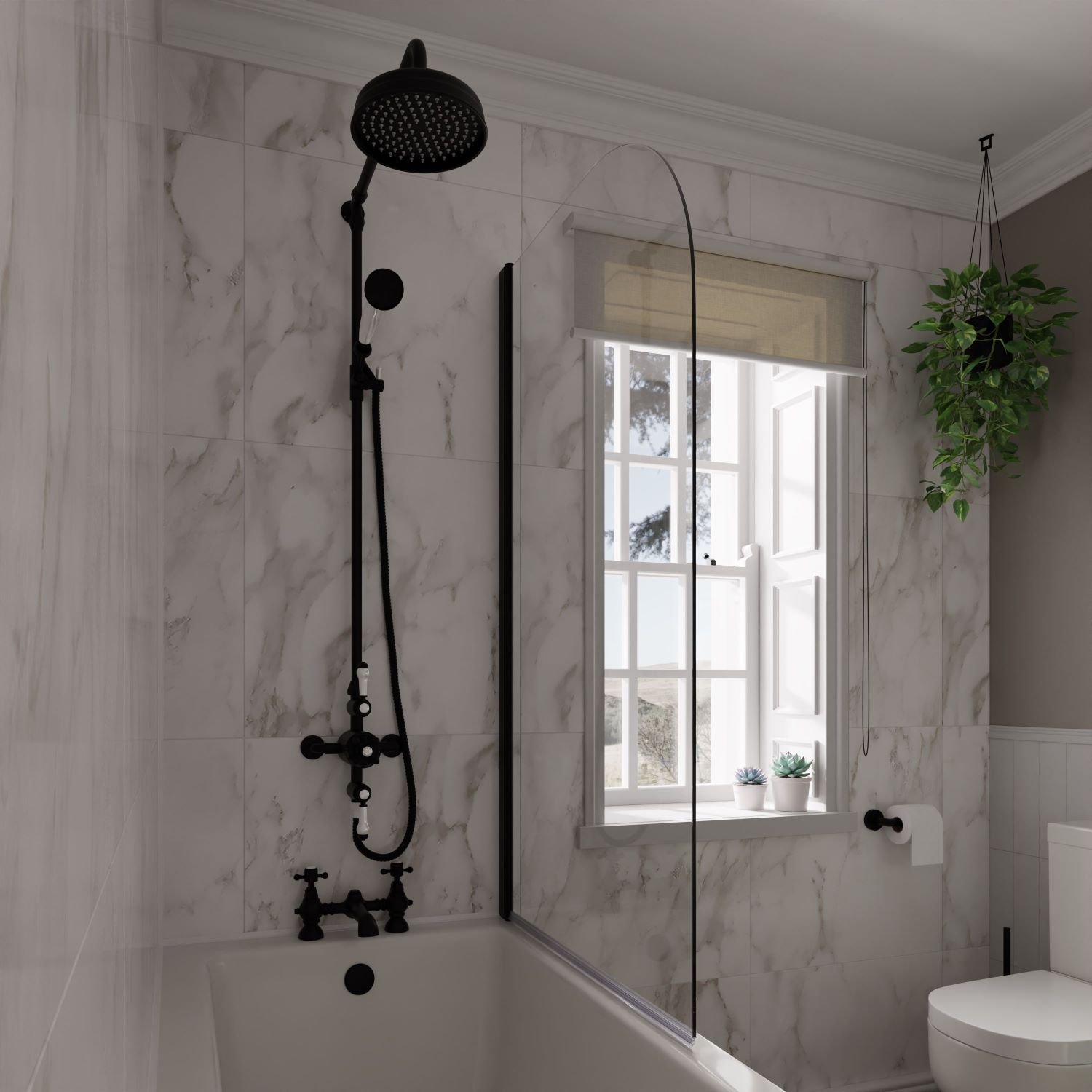
A riser shower head kit is a type of shower head that slots into an extendable pipe, allowing you to control the height of your shower head or even remove it from the wall.
“These are the perfect solution for those who may be too tall for a standard fixed shower head,” explains Brian. “Plus, riser kits are often equipped with a second slider rail that allows you to adjust the placement of your handsets.”
Combination shower head
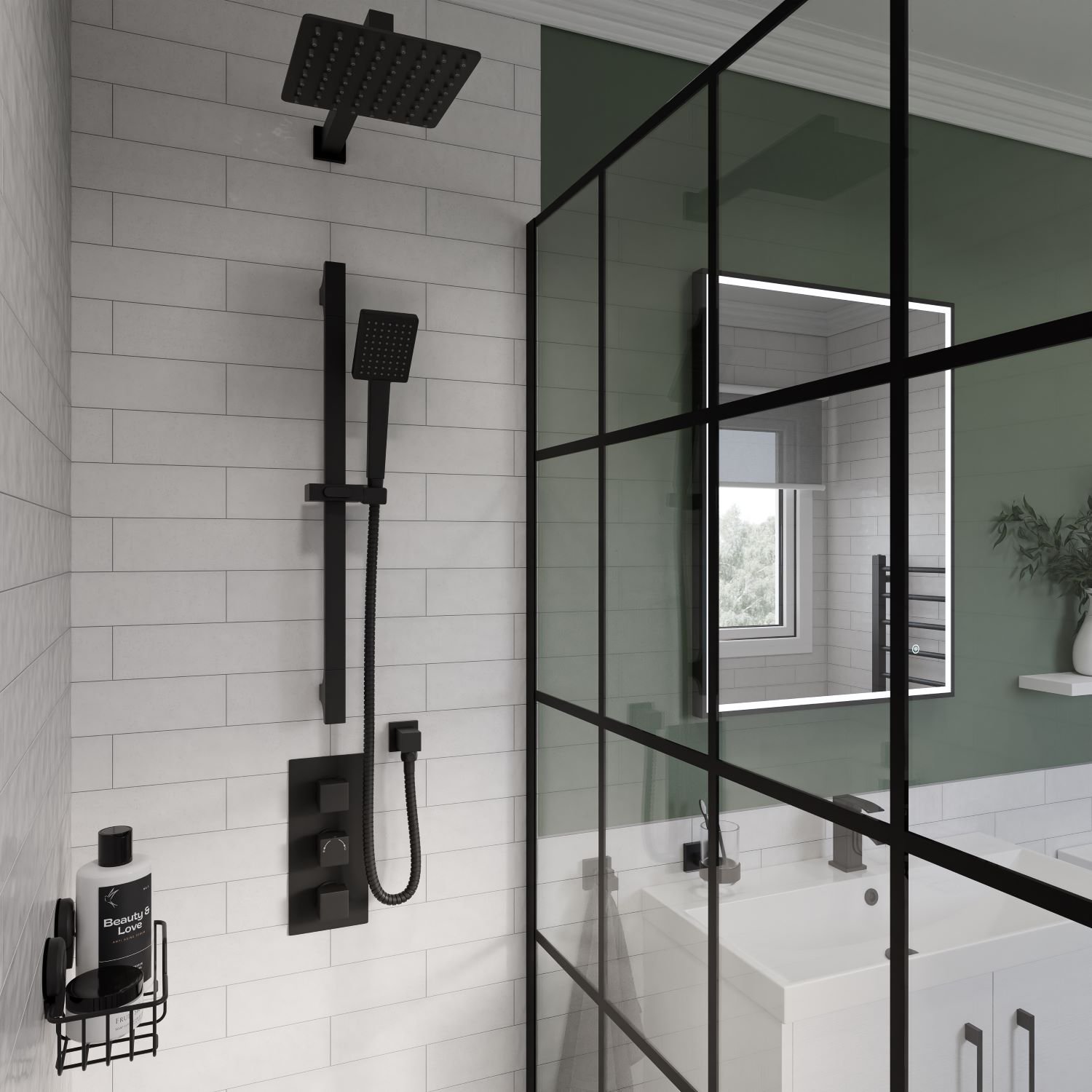
If you’re unsure whether to choose a fixed or rising shower head, a combination may be the ultimate solution.
“A combination shower head offers the best of both worlds, allowing you to have a wall-mounted head and a secondary handset on a riser pole,” Brian says.
How to choose shower valves
Just like shower heads, the type of valves you choose for your shower can greatly impact how your shower looks. There are two types to choose from: exposed and concealed.
However, it’s important to note that thermostatic mixer showers are versatile and can work with both exposed and concealed valves. However, electric showers, rigid riser designs and shower panels typically come with exposed valves.
Exposed valves
As the name suggests, exposed valves are mounted on the surface of the wall, leaving all the working parts visible.
The bar valve is the most common type of exposed valve. This horizontal bar is mounted to the outside of the wall, which is then connected to your shower via a hose.
“Exposed valves offer a much more affordable solution to complete your shower installation, making them a popular choice for those renovating on a budget,” Brian explains. “They also have the added benefit of being easy to install, since there is no need to find enough wall cavity space for the entire unit to be internally mounted.”
Concealed valves
In contrast, concealed valves are hidden inside the wall for a sleek, minimalist appearance. Usually, the only visible parts are the controls for the water and temperature, with the working parts concealed within the wall cavity.
If you have a shower hose, this is often hidden inside the wall via an outlet, while fixed shower heads will be mounted directly to the wall or ceiling.
“Concealed valves are a great option if you’re looking to save space and create a professional finish to your bathroom renovation,” Brian says. “However, they are typically much harder to install, as most of the shower system will need to be fitted into the wall cavity. This usually means requiring a professional installation, rather than being able to do it yourself, which can also make concealed valves more expensive.”
Frequently asked questions
How do I measure my bathroom for a new shower?
When planning to install a new shower enclosure or shower screen, it's important to measure your bathroom accurately to ensure the new fixture fits perfectly. Here’s how to do it:
- Measure the height – Use a tape measure to determine the distance from the floor to the ceiling. This measurement is crucial for understanding the vertical space available for your shower.
- Measure the width and length – Next, measure both the width and the length of the area where you intend to install the shower. This will help you understand the floor space available.
“You should be as precise as possible when taking measurements before fitting a new shower. Even the slightest deviation in measurements could significantly impact your ability to fit your chosen enclosure into the space available,” Brian warns.
“Ideally, you’ll have two people available to take measurements, meaning the tape measure can be held firmly in place. It may even be worth cross-checking measurements by having the other person take a second measurement to ensure they match up.”
How do showers work?
The way a shower works depends on the type of shower you’re using.
- Standard mixer showers – These rely on the valve to control where the water goes to heat it properly. When you turn the shower on, cold water is directed to the cold pipe, while hot water is directed via the heater to be warmed up before it hits the hot pipe. Water from both pipes then meets at the shower valve, which mixes the water to form the correct temperature before it’s released from the shower head.
- Electric showers – This process is slightly different for electric showers. These are directly connected to your home’s cold water supply, working in a similar manner to a kettle to heat the water on demand. A heating element inside the shower carries out this heating process, allowing it to supply hot water almost immediately rather than needing to wait for water to be directed through a water heater.
How do I choose a shower enclosure?
There is a wide selection of shower enclosures to suit your bathroom and space requirements.
Square enclosures are great if you have a limited amount of space for your shower, offering a relatively small footprint of around 760mm x 760mm at minimum.
Another space-saving option is a walk-in shower enclosure. These sleek enclosures have become increasingly popular for their simplicity and ease of installation, removing the worries about fitting in an enclosure door or leaving enough space to ensure the door can be opened.
If space isn’t a concern, a D-shaped enclosure offers an elegant feel and a spacious shower, leaving plenty of room for installing shampoo caddies and other useful accessories.
Similarly, a quadrant shower enclosure makes a great addition to any large bathroom. Available up to 1000mm in depth, these shower enclosures are ideal for fixed shower heads, leaving ample space to prevent water splashes.
The best showers for every home
Best electric shower
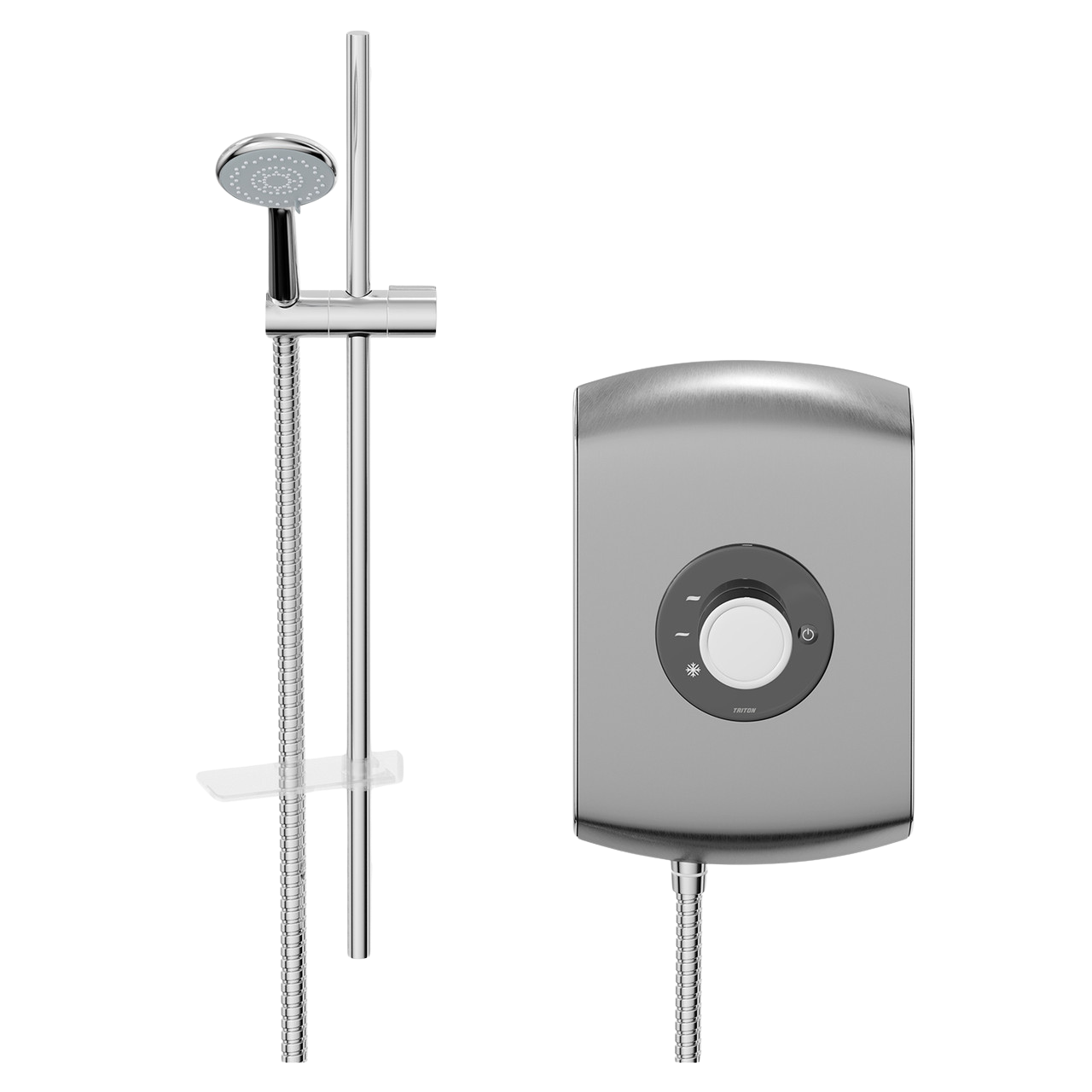
Triton Amore Brushed Steel 9.5 kW Electric Shower
“With electric showers, the kilowatts make all the difference,” Brian says. “The stronger the kW rating, the more powerful your shower will be.”
“Our Triton Amore offers 9.5 kW power, producing a strong, steady shower. The brushed steel finish helps set this model apart, adding a sleek, modern feel to any bathroom.”
Best thermostatic mixer shower
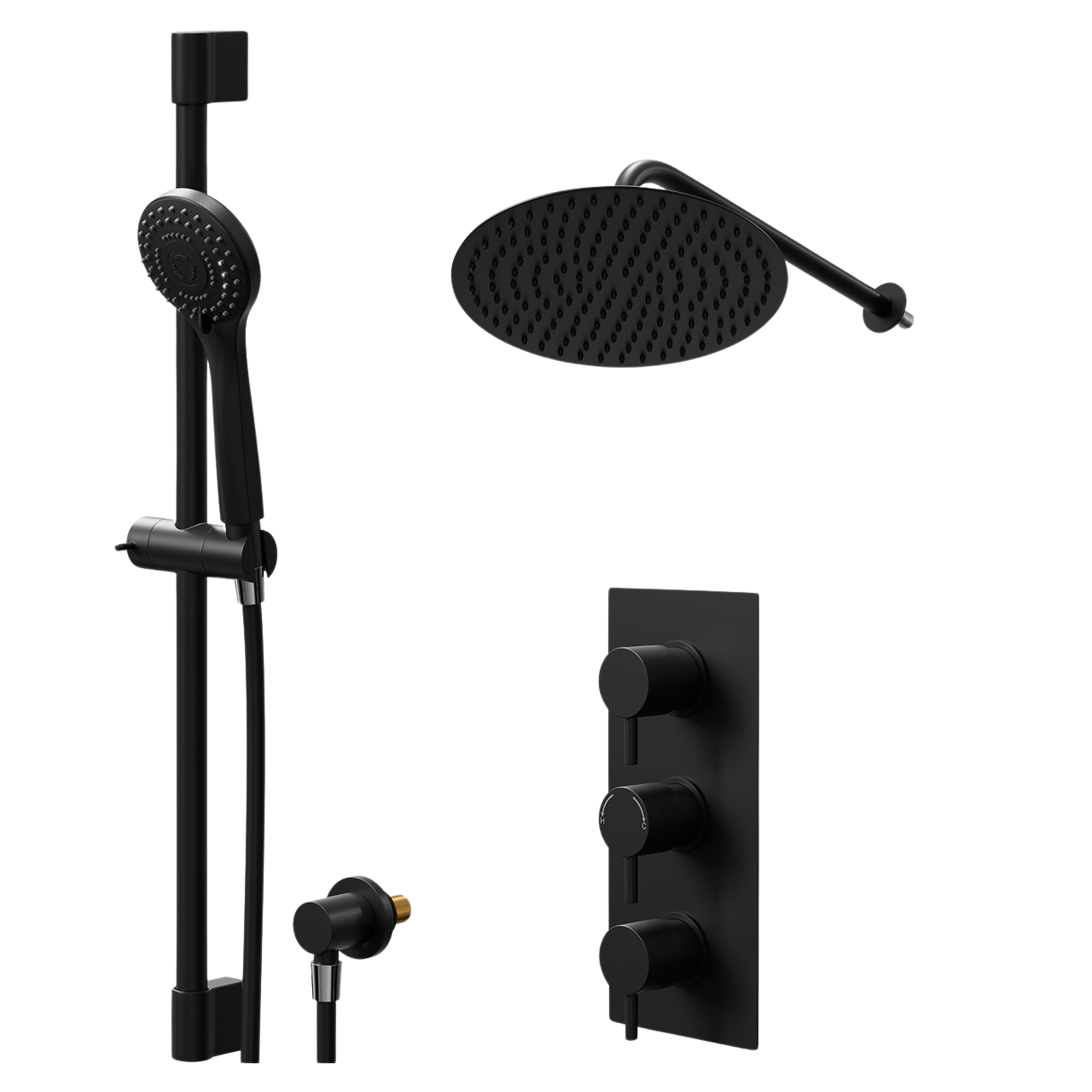
Colore Round Matt Black Concealed Triple Thermostatic Shower
“You really can’t go wrong with a thermostatic mixer shower,” says Brian. “This matt black Colore model offers a concealed shower unit with stylish fixtures and an additional handset for a versatile shower that’s great for bathing kids, washing the dog, or even cleaning the shower.”
Best traditional shower
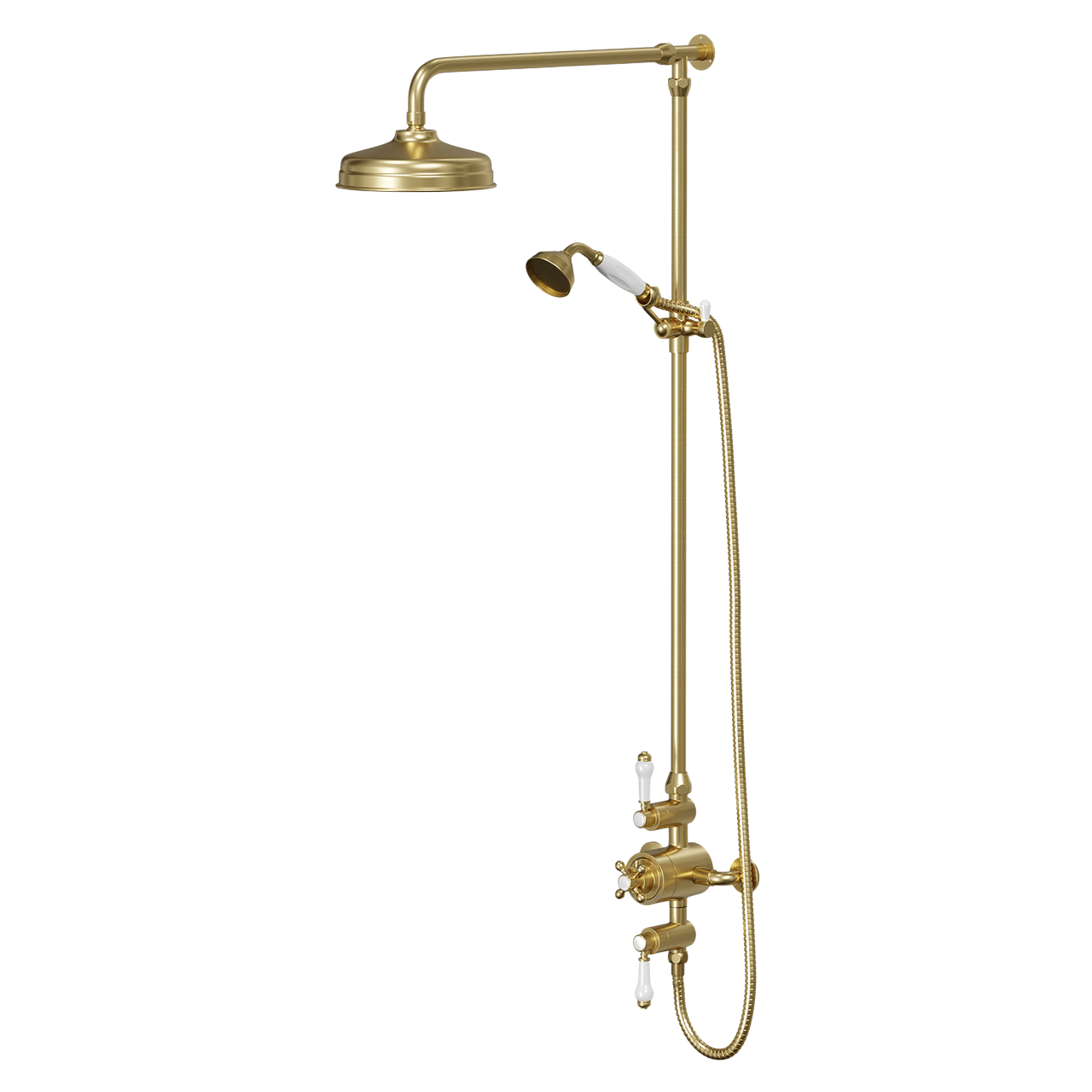
Colore Traditional Brushed Brass Thermostatic Shower
“Something about a traditional, vintage-looking shower adds a touch of luxury to any bathroom,” Brian says. “The brushed brass finish on this Colore model helps to elevate the look of your bathroom and creates a great focal point.”
Best for families
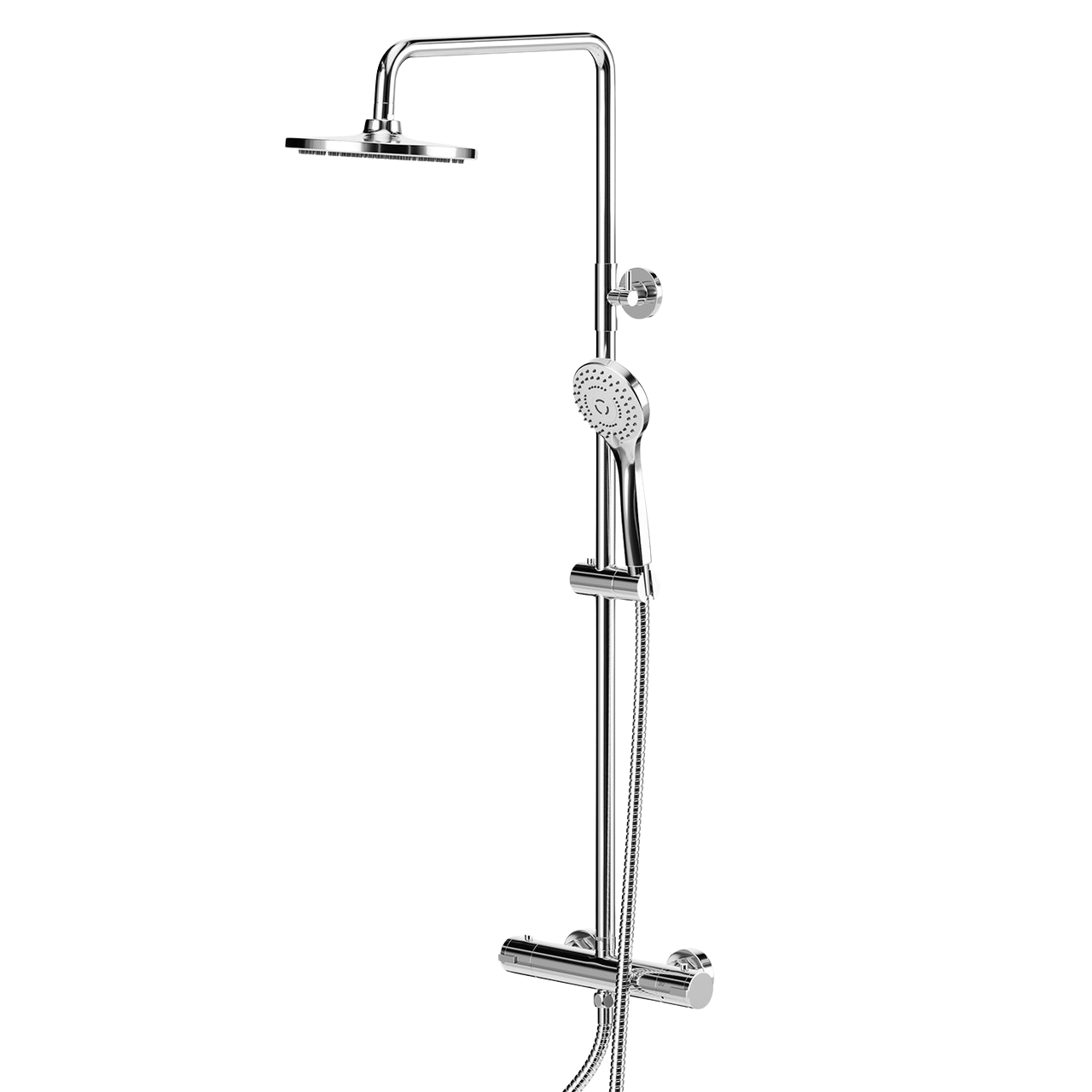
Delta Thermostatic Rigid Riser and Handset Shower System
“The family shower has an important role to play, and it’s crucial to find a versatile model that can be adjusted to different heights to allow each family member to have an equally enjoyable shower experience,” Brian says.
“This Delta thermostatic rigid riser is the perfect combination of a sleek, modern design with adjustable features – including a useful additional handset that makes rinsing the kids’ hair a breeze.”
Best for modern bathrooms
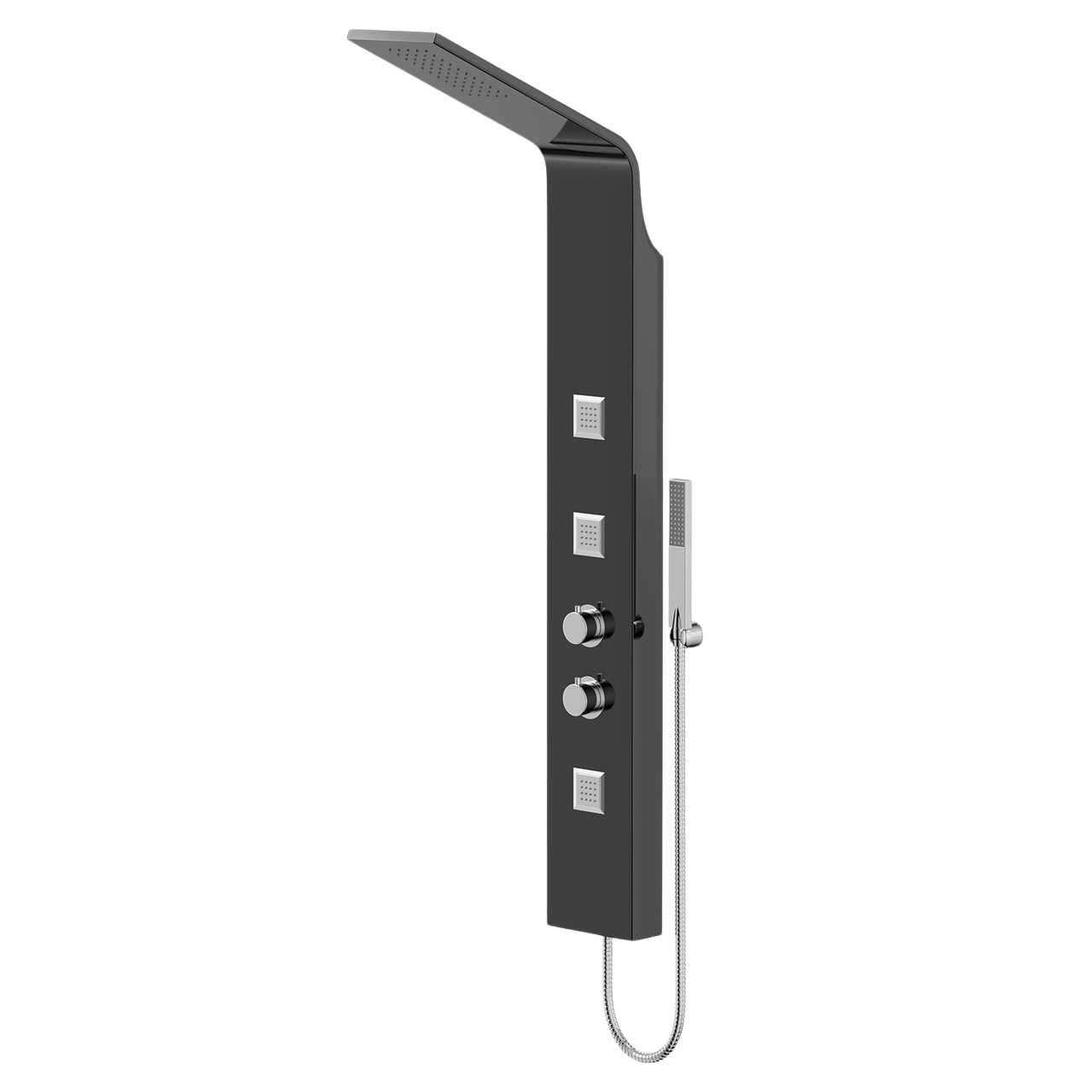
Marlin Black Thermostatic Shower Panel
“When choosing a shower for a modern style bathroom, a shower panel is one of the best ways to go,” Brian explains.
“These shower units have a contemporary, stylish feel with minimalistic features and a smooth finish. This Marlin black shower panel offers the perfect way to keep the shower components out of view, leaving a clean, sleek shower that will look right at home in any contemporary bathroom.”
Best budget option
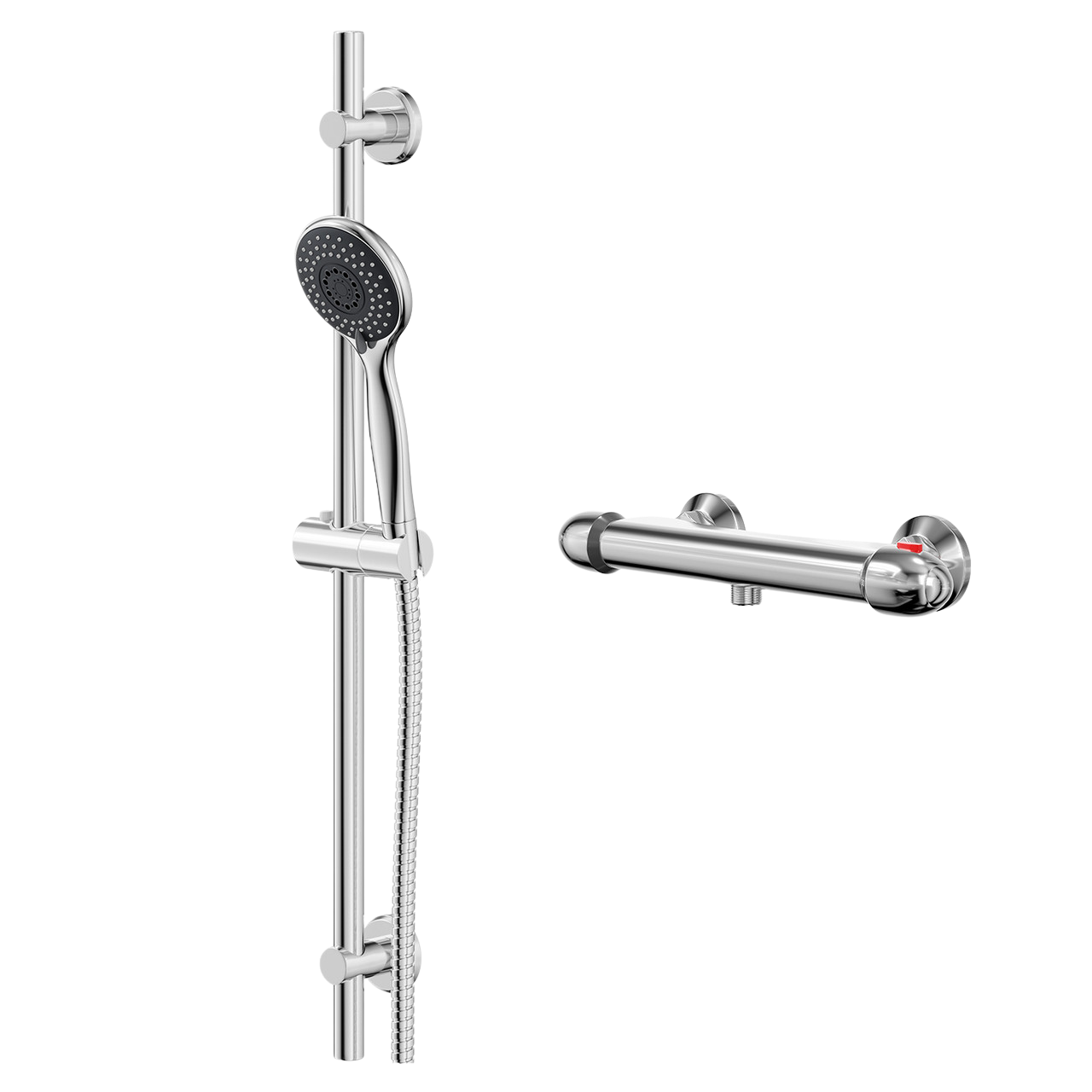
Bullet Thermostatic Bar Valve with Clyde Slide Rail Kit
“If you’re looking for a no-frills shower that works great on a tight budget, this model is just what you need,” says Brian.
“It’s a simple design, and the shower head height is fully adjustable. It can also be easily removed to make hair-washing easier.”
Best for space-saving
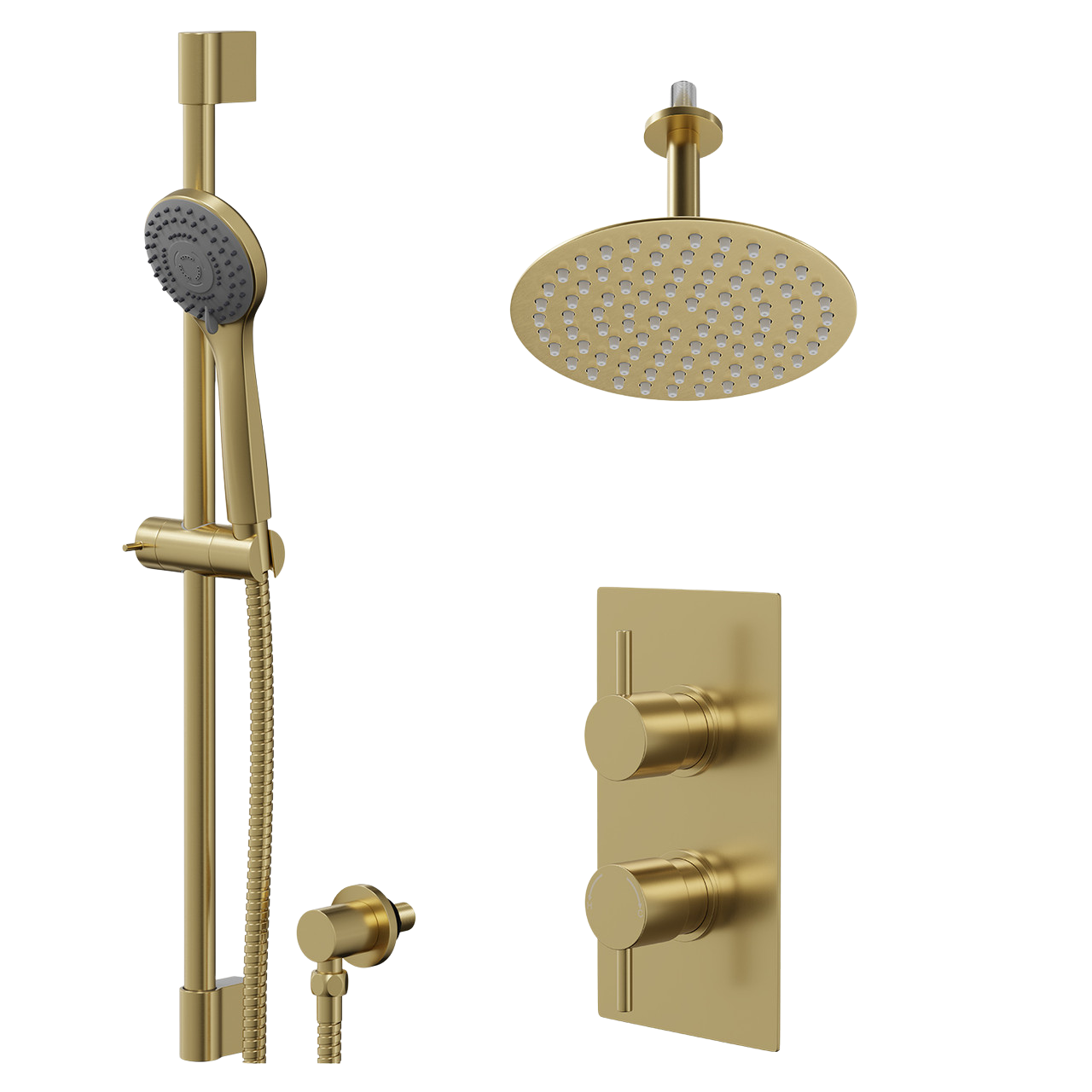
“For those with a limited amount of space, models such as this Colore concealed twin unit can help you get the most out of your bathroom without needing a large installation area,” Brian explains.
“The concealed valves mean that most of the shower unit will be hidden within the wall, helping to prevent bulky wall installations. Plus, the main shower head is ceiling-mounted, meaning there’s less space required on the wall itself.”
Shop showers online today
Now that you’ve learned everything there is to know about how to choose the perfect shower for your bathroom, it’s time to find a style you love.
Shop a wide range of showers online or in-store today at Wholesale Domestic. Choose from traditional or modern styles to accentuate any bathroom.
Or, if you’re still unsure which model is right for you, contact us to speak to one of our friendly team members for more advice. We’ll help you select a shower that meets your budget, space, and style requirements.

 FREE delivery over £500*
FREE delivery over £500* Visit our showrooms
Visit our showrooms Finance options available*
Finance options available* Apply for a Trade Account
Apply for a Trade Account
